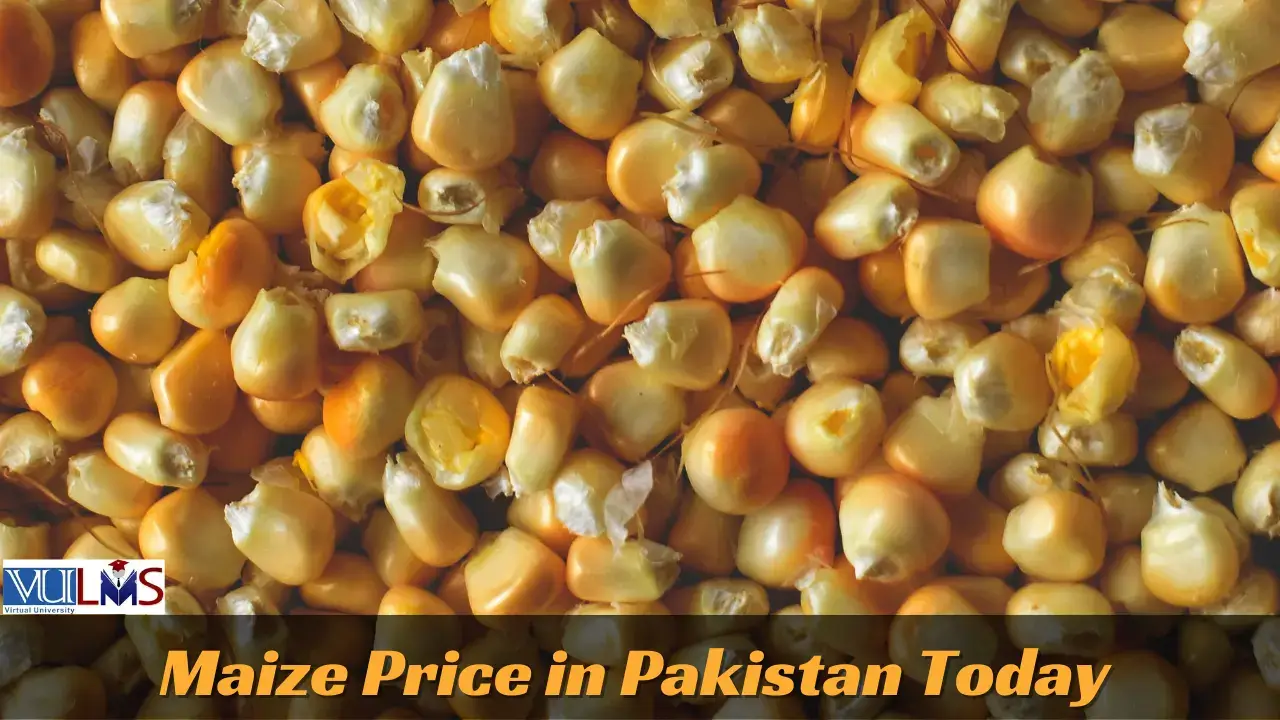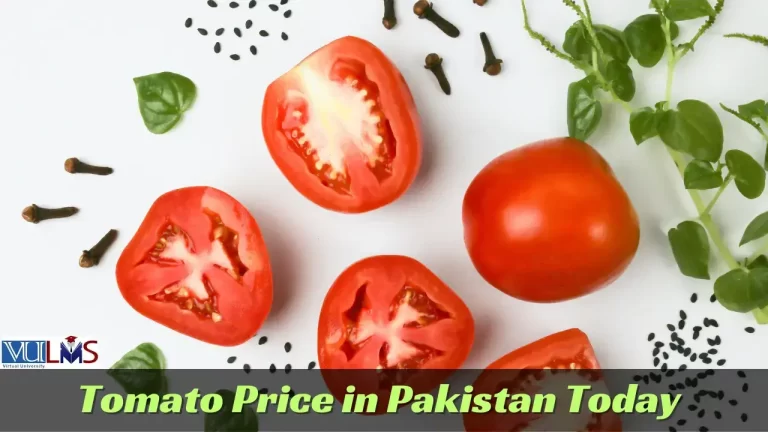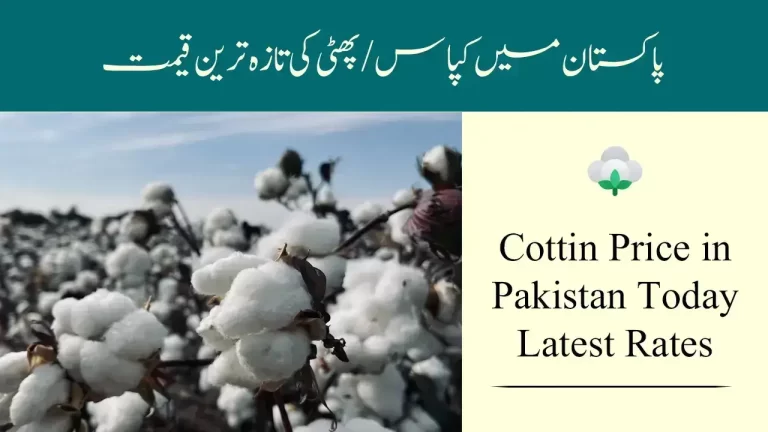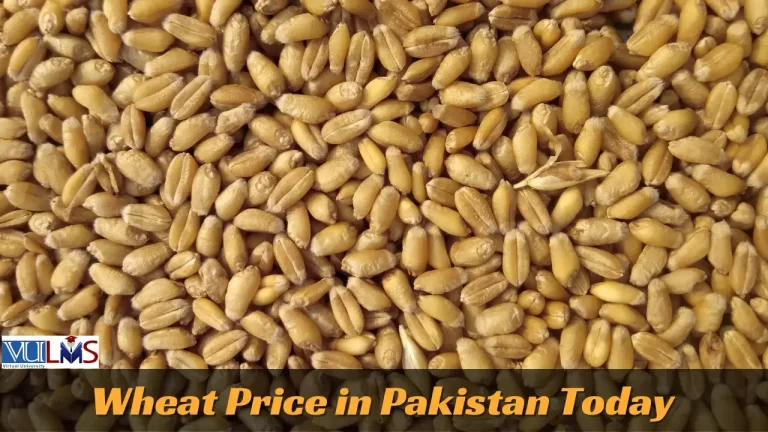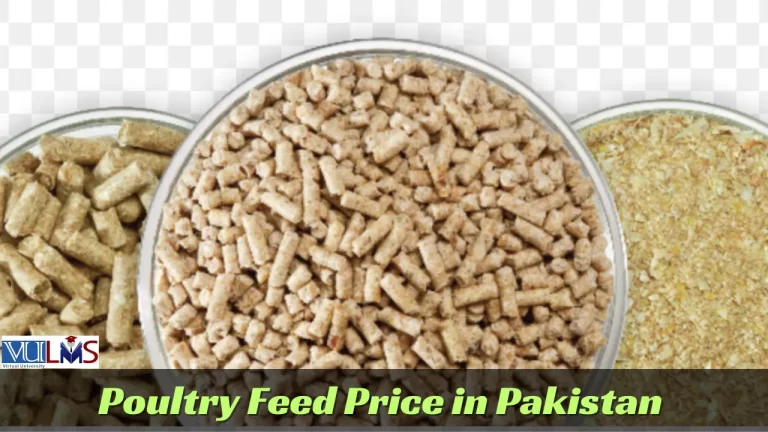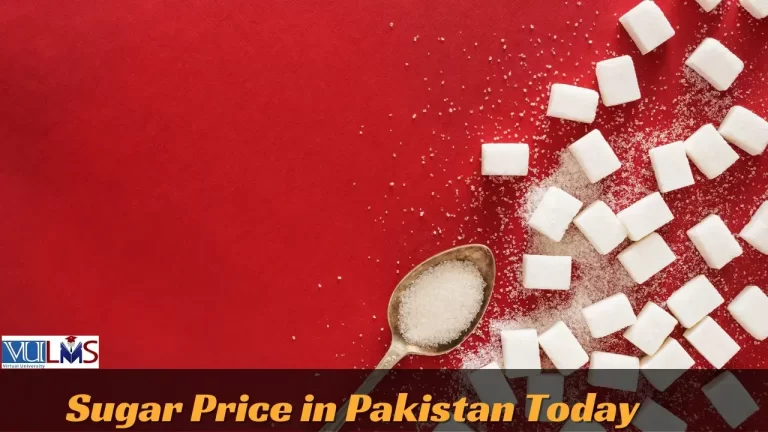Maize Price in Pakistan Today | Latest Corn Rate Per 100 KG 2024
Have you ever wondered what goes into determining the maize price in Pakistan today? With a range spanning from Rs 5000 to Rs 6500 per 100 kg, the world of maize pricing can be as perplexing as it is fascinating. Let’s dive in and unravel the complexities surrounding the latest corn rates in 2024.

Today Maize Price in Pakistan (Corn Rate) – آج مکئی کا ریٹ
The current maize price in Pakistan, also known as the corn rate, ranges from 5,000 PKR to 6,500 PKR per 100 kilograms. This price fluctuation reflects the dynamic nature of the maize market in Pakistan, influenced by a variety of factors, as discussed in the earlier sections of this article. Farmers, traders, and consumers closely monitor these price ranges to make informed decisions regarding buying and selling maize, as well as managing their expenses and profits.
| City/ District | Minimum Rate Rs | Maximum Rate Rs | Average Price Rs |
|---|---|---|---|
| Lala Musa | Rs. 5,000 | Rs. 7,000 | Rs. 6,000 |
| Chichawatni | Rs. 5,000 | Rs. 6,000 | Rs. 5,500 |
| Gujranwala | Rs. 4,900 | Rs. 5,300 | Rs. 5,100 |
| Mian Channu | Rs. 5,750 | Rs. 6,000 | Rs. 5,875 |
| Toba Tek Singh | Rs. 4,750 | Rs. 5,475 | Rs. 5,200 |
| Kamalia | Rs. 4,500 | Rs. 5,750 | Rs. 5,125 |
| Okara | Rs. 4,550 | Rs. 6,375 | Rs. 5,463 |
| Sahiwal | Rs. 5,400 | Rs. 5,700 | Rs. 5,550 |
| Arifwala | Rs. 5,375 | Rs. 6,000 | Rs. 5,688 |
| Pakpattan | Rs. 5,000 | Rs. 5,600 | Rs. 5,300 |
| Burewala | Rs. 4,000 | Rs. 5,875 | Rs. 4,938 |
| Vehari | Rs. 5,000 | Rs. 5,875 | Rs. 5,438 |
| Faisalabad | Rs. 5,000 | Rs. 6,000 | Rs. 5,500 |
| Multan | Rs. 5,750 | Rs. 6,000 | Rs. 5,875 |
| Kahror Pacca | Rs. 5,000 | Rs. 5,500 | Rs. 5,250 |
| Sargodha | Rs. 5,000 | Rs. 6,000 | Rs. 5,500 |
| DG Khan | Rs. 6,300 | Rs. 6,400 | Rs. 6,350 |
Also Read:
Cheeni Price in Pakistan Today
Gandum Rate in Pakistan per 40 KG
Understanding Maize: A Vital Crop
Maize, also known as corn, is a cornerstone of Pakistan’s agriculture. Its versatility and wide range of applications make it a vital crop. From food products to animal feed, maize plays a significant role in the nation’s economy. Let’s explore why maize is so crucial to Pakistan.
The Importance of Maize
Maize is more than just a cereal crop. It serves as a source of livelihood for countless farmers and is a staple in many households. Understanding its significance helps us grasp the dynamics of maize pricing.
Maize in Pakistan’s Agriculture
Pakistan’s agriculture heavily relies on maize cultivation. From the northern regions to the southern plains, maize is grown across the country. Its role in crop rotation and its economic contributions are noteworthy.
Factors Affecting Corn/Maize Price in Pakistan
The maize market is influenced by a multitude of factors, leading to price variations. Let’s take a closer look at what shapes the maize price landscape in Pakistan.
Supply and Demand Dynamics
The classic interplay of supply and demand is a fundamental driver of maize prices in Pakistan, as it is in any market. When the supply of maize exceeds demand, prices tend to drop. Conversely, when demand outpaces supply, prices rise. Several factors contribute to these dynamics:
- Maize Production: The total maize production in Pakistan has a significant impact on supply. Variations in crop yields, acreage under cultivation, and crop health affect the overall supply of maize.
- Consumption Patterns: Changes in consumption patterns, such as increased demand for maize-based products or shifts in dietary preferences, can influence demand.
- Exports and Imports: International trade in maize, including exports and imports, can affect domestic supply and demand dynamics. Government policies on trade also play a role.
- Storage and Transportation: Storage and transportation infrastructure and practices impact the efficient movement of maize from farms to consumers. Issues with storage or transportation can disrupt supply chains.
Weather Conditions: A Climate-Driven Market
Pakistan’s climate is marked by variations, and these changes can significantly impact maize production. The maize market in Pakistan is weather-dependent due to the following reasons:
- Monsoon Patterns: The timing and intensity of monsoon rains directly influence maize planting and growth. Inconsistent monsoon patterns can result in droughts or floods, affecting crop yields.
- Temperature Extremes: Extreme temperatures, both hot and cold, can harm maize crops. Heatwaves and frost can lead to significant crop damage.
- Water Availability: Maize cultivation requires adequate water supply. Variations in water availability, especially in regions dependent on canals or groundwater, can impact production.
Government Policies and Subsidies
Government intervention through policies and subsidies can have a profound impact on maize prices. These policies are designed to stabilize prices, ensure food security, and support the agricultural sector:
- Support Prices: Governments often set minimum support prices to guarantee farmers a certain income for their maize. These support prices provide a safety net for farmers.
- Subsidies: Subsidies on inputs such as fertilizers, pesticides, and seeds can reduce the cost of production for farmers, influencing the supply side.
- Import and Export Policies: Government restrictions or incentives on maize imports and exports can affect domestic supply and prices.
- Crop Insurance: Government-sponsored crop insurance programs help farmers manage risks associated with weather-related crop losses.
The Global Maize Connection
Maize is a global commodity, and international trends can have a ripple effect on maize prices in Pakistan. Here’s how global factors come into play:
- International Market Prices: Global maize prices, influenced by factors like production in major maize-producing countries and trade policies, can indirectly affect local prices.
- Currency Exchange Rates: Fluctuations in currency exchange rates can impact the cost of imports and exports, thus influencing local maize prices.
- Climate Change and Global Trade: Climate change’s impact on maize production worldwide is a growing concern that can influence global maize supply and prices, indirectly affecting Pakistan.
Maize Price Trends in Pakistan
Now, let’s zoom in on the present. What are the latest corn rates in Pakistan? Understanding the current scenario is vital for both farmers and consumers.
Unpacking the Latest Corn Rates
The maize price range today, between Rs 5000 and Rs 6500 per 100 kg, isn’t static. We’ll dissect the factors contributing to this range and its implications.
Factors Contributing to Price Fluctuations
Price fluctuations are common in the maize market. Discover the role of various elements, such as production, demand, and government policies, in shaping these fluctuations.
Managing the Roller Coaster: Maize Price Volatility
Given the volatility in maize prices, managing this agricultural commodity can be challenging. Here are strategies to navigate the roller coaster of maize pricing.
Strategies to Navigate Price Swings
Farmers and traders need strategies to cope with unpredictable price swings. We’ll explore various approaches to manage this volatility.
Utilizing Futures and Options
The world of futures and options provides tools for mitigating price risk. We’ll delve into how these financial instruments can be applied to the maize market.
What Are Effective Farming Practices for Price Maximization?
Optimizing maize prices begins at the root, quite literally. Implementing effective farming practices is the foundation upon which price maximization is built. Here are key strategies:
- Crop Rotation: Maize farmers can employ crop rotation techniques to maintain soil fertility and reduce the risk of pests and diseases. By rotating maize with other crops, they can enhance yields and reduce input costs.
- Improved Seed Selection: The choice of maize seeds matters. Farmers should consider using high-yield, disease-resistant, and climate-adapted maize varieties to boost production and market value.
- Precision Agriculture: Leveraging modern farming technologies, like GPS-guided machinery and soil testing, can optimize resource use and increase maize yields, ultimately improving the bottom line.
Market Strategies for Farmers
The maize market is not only about what’s grown but also about how it’s sold. Developing effective market strategies is crucial for farmers looking to get the most out of their hard work. Here’s how they can navigate the market effectively:
- Diversification: Farmers can explore different markets for their maize, including local markets, processors, and exporters. Diversification helps spread risk and ensures access to various buyers.
- Timely Selling: Maize prices can fluctuate throughout the year. Knowing the seasonal variations in prices and selling when prices are high is a prudent strategy. Farmers can utilize storage facilities to store their harvest until the optimal selling period.
- Quality Assurance: Maintaining the quality of maize is vital. Proper storage, handling, and packaging can preserve maize quality and fetch higher prices in the market.
How Can Technology Be Leveraged for Achieving Better Prices?
Technology isn’t just for urban areas; it has a significant role to play in rural agriculture as well. Farmers can harness technology to enhance their maize prices:
- Mobile Apps: Various mobile apps provide farmers with market information, helping them make informed decisions about when and where to sell their produce.
- Online Platforms: Online marketplaces allow farmers to connect directly with buyers, reducing intermediary costs and ensuring better prices.
- Weather Forecasting: Access to accurate weather forecasts can help farmers plan their planting and harvesting schedules, mitigating potential weather-related losses.
Empowering farmers with these strategies and tools not only enhances their economic well-being but also contributes to the overall stability of the maize market in Pakistan. When farmers are well-informed and equipped, they can navigate the market with confidence and optimize maize prices, benefiting both themselves and consumers.
Also Read:
Conclusion: The Maize Market in Pakistan
In conclusion, understanding maize pricing in Pakistan is no simple task. With a myriad of factors at play, from supply and demand to global market trends, farmers and consumers alike need to be well informed to make the most of this essential crop. Maize is more than just a cereal; it’s a commodity that shapes lives and livelihoods.
Frequently Asked Questions (FAQs):
Strategies that can help control maize price volatility and improve price stability include enhancing market transparency, modernizing farming methods, diversifying maize products, and strengthening the infrastructure of the supply chain.
No, due to seasonal variations, market circumstances, and other considerations, maize prices can fluctuate all year round. Market demand and harvesting seasons are two examples of the elements that frequently affect prices.
The dynamics of supply and demand, the state of the climate, governmental regulations, and global market movements all have an impact on the price of maize.
A vital component of food processing, industrial uses, and animal feed, maize boosts the nation’s economy and supports rural communities.
In Pakistan, the cost of 100 kg of maize currently varies from Rs. 5000 to Rs. 6500.

